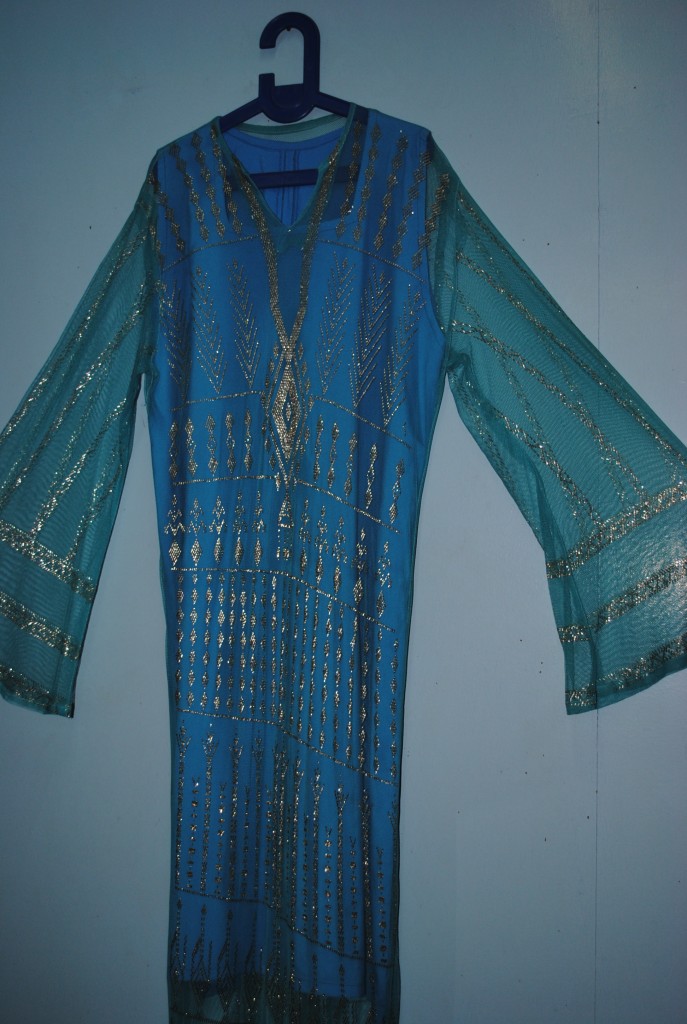The Ministry of Culture held a large festival to mark the 200th anniversary of the French campaign in Egypt led by Napoleon. One of the artefacts displayed in an exhibition held as part of the celebrations, was a impressive piece of French haute-couture, a dress from the 1930s. Surprisingly, this French fashion masterpiece featured an ancient Egyptian art found deep in the rural areas of Upper Egypt; tally. Egyptian artist Saad Zaghlol saw the exhibition and was inspired to safeguard this ancient Egyptian art.
Fine artist Zaghlol started in his home city of Assiut, in Upper Egypt, and scoured the old neighbourhoods and districts looking for anyone who still knew how to make a piece of tally. After much searching, Zaghlol found a few old women who still remembered how to make tally and persuaded them to teach 100 young women this handcraft.
Simply said, tally is an openwork textile, embroidered with pure gold or silver. In the old days, aristocratic families in Egypt used to have a woman on staff permanently tasked only with making tally dresses. The making of a tally dress could take up to three months.
The decline in the popularity of tally was due to cultural reasons and not a change in fashion or style. The aristocracy abandoned wearing tally when belly dancers started applying the technique to their costumes. It was deemed inappropriate for conservative aristocratic women to wear the same dresses as belly dancers, who would put on shows in popular festivals and celebrations.
There are three types of tally; Islamic, Coptic, and folkloric with overlapping designs between the three types. “The first piece of tally I saw in Assiut belonged to an old, simple woman. It was a folkloric piece which depicted carvings of mosques and churches beside each other,” said Zaghlol.
Tally is comparable to the description of an ancient Egyptian textile called Cabaty, documented in books written by the great Egyptian historian Al-Maqrezy in the 15th century, and it is believed that Cabaty is the origin of tally.
Tally is not Egypt specific, it can be found in many other countries including Saudi-Arabia, Lebanon and Oman. What makes Egyptian tally unique is the story it holds, as each crafter embroiders a story on her textile. Egyptian women still use symbols and figures similar to the hieroglyphics found carved in ancient Egyptian tombs and temples, proving tally originated in Egyptian.
According to Zaghlol there is more to it though, “the difference between the Egyptian tally and the others lies in the geniality of the craftswomen. Egyptian women are able to transmit some of their vivid spirit into the blank piece of textile and the results are more animated and beautiful,” Zaghlol said.
In 1994, Zaghlol founded an organisation to revive the Egyptian art of tally; he aimed to establish a younger generation of professional women handcrafters who would be able to keep this art form alive. To date, the organisation has successfully trained more than 700 women and has staged many exhibitions displaying the exotic Egyptian pieces of tally in American, European, and Arab cities.
Notwithstanding the success, the organisation is facing some problems in finding financing for marketing and public relations. Tally is not to everyone’s taste and the handmade pieces are a little costly. Zaghlol’s organisation refuses to deal with ordinary traders who are unappreciative of the worth of this art and do not value it the way he feels they should. He hopes the government will eventually back his organisation and continue increasing the number of tally craftswomen, or, failing that, that a private enterprise will take up the cause with him and help assuring that the Egyptian art of tally will be preserved for generations to come.





